Table of Contents
Robinhood invites new players to invest, but its interface doesn’t necessarily help them make money.
When a group of Redditors rallied to buy Gamestop and AMC titles, they sent companies up against all market expectations. AMC in particular was able to cancel $700 million in debt, saving the film chain from a secure bankruptcy. While many of the other gains may be short-lived, there is no doubt that this is a collective investment maneuver that will be studied and discussed for years to come. And at least part of the credit, or criticism, belongs to Robinhood, the free day-trading app that helped fuel the frenzy, which rose to number one in the App Store, and launched a round of funding towards a $30 billion valuation.
But Robinhood has not had any luck at this time viral; Robinhood is designed to allow new users to purchase impulse. Robinhood’s interface is like no other trading app on the market. The app swaps composure, patience and other features of careful investment with hyperbole, celebration and instant gratification. And the reason is simple: while other equity brokerage apps from industry pillars like Fidelity or Charles Schwab make money by taking a small part of your long-term investments, Robinhood makes most of its income from stock transactions (PFOF). So the more often you buy and sell stocks, the more money Robinhood makes – even if you lose money every click.
“When I think of Robinhood, I like to compare it to social media apps. Twitter, Facebook, Tiktok”, says Blain Reinkensmeyer, head of research at Stockbrokers.com, which performs an annual audit of about a dozen popular stock trading apps.
Robinhood: feast or famine
The very first screen you see when you log in to Robinhood is a great chart that shows your wallet’s progress, which is automatically updated every five seconds. These types of investment dashboards are not unique to Robinhood. All apps have an overview of your account somewhere to monitor your wallet. But Robinhood makes this experience particularly urgent, every time you upload the app: if your wallet is growing, every element of the user interface on the screen is green, even those that are not directly connected to the actions. If your wallet is down, even by a penny, every element of the interface on the screen becomes red. You have to admit that this display mode is important. If you see red, you feel you have to do something. It’s an emergency!
Reinkensmeyer says this kind of stress invented by the interface is what’s kept him away from Twitter for the last two months. And it indicates the business model of the app to explain the phenomenon: not to make you rich, but to make you trade.
What’s even more interesting is what you see after, as you scroll through the home screen. You get news cards, offered by Robinhood’s algorithm, that consist of news that could have an impact on company stock prices. After experiencing the shock that your entire portfolio is sinking, these news cards look like a life raft. “Here, read all this news. Commit. Your next trade could save you”.
Only once you have passed the news can you see your individual titles. Here, again, resides a simple trick. Your stocks appear with their full share price (in red or green, depending on whether they are up or down). What they don’t show is GNP, profit or actual loss on your investment. In other words, if you own a $1 piece of a $800 Tesla stock, Robinhood offers nothing to convey the actual amount of my gain or loss as other applications will. Instead, the home page is party or famine.
Train to commit
With your head in turmoil over the size of your gains or losses, you could use this moment to go buy a new stock. But there’s a catch. It’s harder to do than you might think.
“Let’s say you’re logged in and you want to place a trade. You can’t just tap trades like any other trading app. There are five buttons at the bottom, and there is no trade!” dice Reinkensmeyer. “You have to click on the magnifying glass, which takes you to their ideas page first. They channel you into the ideas page, and you’ll see popular lists, news headlines, top movers, and an endless scrolling of other news”.
If Robinhood’s goal is to sell you more shares more often, why should it push you to so many trends and stories instead of making buying a single stock faster? Reinkensmeyer believes it’s because Robinhood knows his audience – the less experienced traders.
“It’s as if Robinhood knew that his average customers have no idea what they want to buy”, says Reinkensmeyer. “So they list the ideas to guide that behavior!”
A counterpoint to such criticism is that this friction of news in the interface probably slows down even less experienced traders. If you logged in to buy AMC, then you saw stories that were overrated, you might question jumping on the trend.
In any case, this endless onslaught of news can also suck in the drama of day trading. Maybe you weren’t going to buy Gamestop shares during its descent, but reading all these Gamestop stories that came into the feed makes it hard to ignore them. In any case, this feed is intended to drive engagement, the main metric of any social media app.
Gamify trading to feel like a lottery
Even if your earnings are so small that you can barely buy us coffee, Robinhood doesn’t care. It is however a time to celebrate. Falling confetti from the top of the screen. Was it a small celebration for my first exchange? No. Robinhood makes it rain confetti every time you buy an action.
“When you go to sell, even for a profit, do not fall confetti. Why, there is a regulatory reason?” riflette Reinkensmeyer. “I don’t know, but it’s very obvious to me what behavior Robinhood wants to reinforce“. Aside from confetti, the concepts of gifts, winnings and free earnings in general are strong basic metaphors of the Robinhood user interface.
On the home screen above, a button reading “Free Stock” complete with a wrapped gift is permanently located in the upper right corner. It’s always there (and yes, it’s green when your actions are at the top, and red when they’re at the bottom). Robinhood gives each user a free title to subscribe to the application.
As a result, the temptation to sign up is great – you could get a title that is worth hundreds of dollars, like Apple, Facebook or Tesla! (A study of users conducted by Reinkensmeyer in the past has found that the average free title is worth less than $6 per share). But in particular, Robinhood will give you a free stock for every new member who signs up. And that “Free Stock” button is a ubiquitous invitation to win a mini lottery.
“Lottery” is not a metaphorically used term, but literally. Because when you get a free title, Robinhood presents you with an option of three scratch card tickets. Pick one, and literally scratch your finger on your phone’s screen to see what you’ve won. I admit, it’s a lot of fun. After I signed up, I immediately tried to get the others to join, just for the thrill of another scratch card.
It’s not that bad! But it’s not optimized for making money
Despite many of Robinhood’s User Experience games to make sure he makes money, Reinkensmeyer does not see him as a particularly evil force in trading. Although he himself has only a few dollars in the app to test it, he admits to liking some of the features very much. Reinkensmeyer claims that there is nothing inherently wrong with the “Free Stock” button. It’s just a button of free actions! He also praises Robinhood’s newsletter as his favorite across the industry.
Ultimately, however, the evidence suggests that Robinhood’s investors are not making as well as the company. Independent research by Oklahoma State and Emory University found that, on average, Robinhood traders buy stocks that do not get better results in the next 3-20 days. “We find that Robinhood’s property changes are not correlated with future returns,” researchers write, labeling Robinhood users as mere “noise traders” in the market. Yet, there may be real value to Robinhood. The app gives investors the opportunity to experience trading – perhaps even with a single dollar – which is rarely as high-profile or volatile as the Gamestop saga.
“Some people say Robinhood is like a casino. I don’t believe it at all. I think investing in any way is healthy when it’s done [well],”, concludes Reinkensmeyer. “You only invest with 5% of the money you have. If you have $1,000 in cash, $50 to invest is healthy”.


